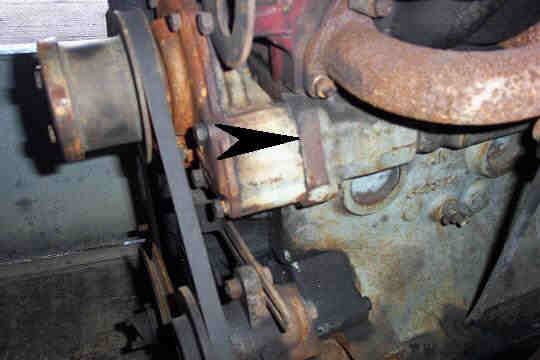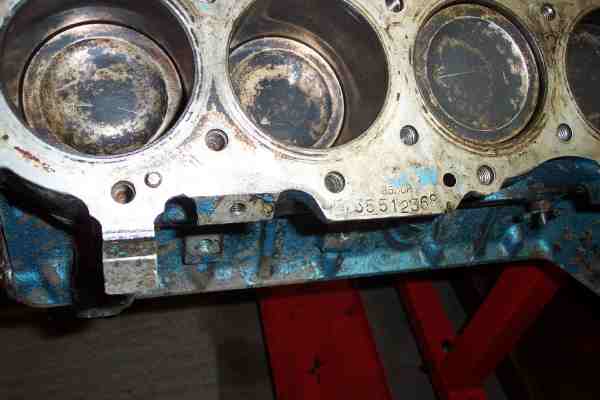Here's the list
Most older Land Rovers have had at least one engine change in the past.
Land Rover engine designs did not change often, but there are a couple of key changes which may not be immediately obvious just looking at an engine, and for which the serial number can be very invaluable. The most obvious ones are:
- Major redesign of the 2286cc petrol engine in 1961, when the Series IIA replaced the Series II
- Diesel engine redesigned and increased from 2052cc to 2286cc at the same time
- Change from 3 bearing to 5 bearing crank on 4 cylinder engines around 1980
- 2286cc petrol replaced by 2495cc in 1985 - the new engine has hardened valve seats and will run on unleaded
A couple of other points worth knowing in relation to engine numbers. Firstly, the 2286cc petrol and diesel engines had interchangeable cylinder blocks. It is not uncommon for engine reconditioners to mix and match components, so you may find a diesel engine with a petrol serial number or vice versa. This should not be a problem on 5 bearing engines as the petrol and diesel used the same crankshaft, but on the earlier 3 bearing engine, petrol crankshafts were cast, and much weaker than the forged items used in diesel engines. If you put a petrol crankshaft in a diesel engine, it will run fine but may break under load. So if you find a diesel engine which has a petrol serial number on it, you need to be sure that the crankshaft has been replaced with the correct diesel type. To confuse matters more, some unscrupulous firms have been known to put petrol cranks in reconditioned diesels, and hope they last until after the warranty runs out. So with a 3 bearing diesel of unknown history, the safest check is to remove the sump and take a look inside. (Sump gaskets are very cheap, and you can clean all the old gunge from the bottom of the sump at the same time.) If the crank has a large letter 'P' cast into it, and is of smooth appearance, it is a petrol crank. If it is slightly rough looking and has no letter 'P' it's a diesel crank.
Compression ratios: although Land Rover used different serial numbers for low compression (7:1) and high compression (8:1) four cylinder petrol engines, the cylinder heads are interchangeable between the two, so the engine number is not a reliable guide to the actual specification. The compression ratio is cast into the side of the cylinder head.
Also worth knowing is that Land Rover introduced a new cylinder block for the 2.5 Turbodiesel (part no. ERR479) from engine number 19J27515C. I have not been able to confirm, but suspect that this block was strengthened to get round the block cracking problems for which the 2.5TD had become notorious. Certainly the later (1989-90) 2.5TD seems more durable than the earlier ones. If I were rebuilding one of these engines I would try to get hold of a late block just to be sure - I certainly wouldn't bother rebuilding an earlier one.
Finally, whereas the 2286cc petrol and diesel blocks have the same part number, on 2495cc engines they are different (and the TD is different again). So I do not know whether these blocks are interchangeable.
Finding your serial number: On four cylinder engines, the engine number is stamped on a flat area just forward of and below the front exhaust port, between the exhaust manifold and the water pump housing. On V8s it can be seen by looking down between number 2 and 3 exhaust outlets on the left hand (dipstick) side.
Serial number location on 4 cylinder (arrowed)
Serial number location on V8 (head removed)
10Gxxxxxx Series III petrol 3528cc V8
10Hxxxxxx 90/110 petrol 2286cc 8:1 CR
10Jxxxxxx 90/110 diesel 2286cc
11Gxxxxxx Series III petrol 3528cc V8 (detoxed)
11Hxxxxxx 90/110 petrol 2286cc 8:1 CR (detoxed)
11Jxxxxxx 90/110 diesel 2495cc late military spec (19J block)
11Lxxxxxx Defender 200TDI diesel 2495cc
12Gxxxxxx Series III petrol 3528cc V8 (Australia)
12Jxxxxxx 90/110 diesel 2495cc
12Lxxxxxx Discovery 200TDI diesel 2495cc manual transmission
13Hxxxxxx 90/110 petrol 2286cc 7:1 CR
13Lxxxxxx Discovery 200TDI diesel 2495cc automatic transmission
141xxxxxx Series II petrol 1997cc
146xxxxxx Series II diesel 2052cc
14Gxxxxxx 90/110 petrol 3528cc V8
14Jxxxxxx 90/110 diesel 2495cc (ex London taxi)
14Lxxxxxx Range Rover Classic 200TDi diesel 2495cc manual transmission
151xxxxxx Series II petrol 2286cc
156xxxxxx Series II diesel 2052cc
15Gxxxxxx 90/110 petrol 3528cc V8 (detoxed)
15Jxxxxxx Diesel 2495cc (ex Sherpa van)
15Lxxxxxx Range Rover Classic 200TDi diesel 2495cc automatic transmission
16Lxxxxxx Discovery/Defender 300TDI diesel 2495cc
17Hxxxxxx 90/110 petrol 2495cc 8:1 CR
19Jxxxxxx 90/110 turbodiesel 2495cc
21Lxxxxxx Discovery/Defender 300TDI diesel 2495cc
23Lxxxxxx Discovery/Defender 300TDI diesel 2495cc
236xxxxxx Series IIA petrol 2286cc (fitted to 88 inch airportable)
241xxxxxx Series IIA petrol 2286cc 8:1 CR
251xxxxxx Series IIA petrol 2286cc 7:1 CR
252xxxxxx Series IIA petrol 2286cc 7:1 CR
253xxxxxx Series IIA petrol 2286cc 7:1 CR
271xxxxxx Series IIA diesel 2286cc
276xxxxxx Series IIA diesel 2286cc
286xxxxxx Series IIA petrol 2286cc (Forward Control)
300xxxxxx Series IIA petrol 2625cc (Forward Control)
325xxxxxx Series IIB petrol 2286cc (Forward Control)
330xxxxxx Series IIB petrol 2625cc (Forward Control)
335xxxxxx Series IIB diesel 2286cc (Forward Control)
345xxxxxx Series IIA petrol 2625cc
361xxxxxx Series III petrol 2286cc 8:1 CR 5-bearing
364xxxxxx Series III petrol 2286cc 7:1 CR 5-bearing
366xxxxxx Series III diesel 2286cc 5-bearing
895xxxxxx Series III diesel 2286cc 3-bearing (fitted to 88 inch airportable for export)
901xxxxxx Series III petrol 2286cc 8:1 CR 3-bearing
902xxxxxx Series III petrol 2286cc 8:1 CR 3-bearing
903xxxxxx Series III petrol 2286cc 8:1 CR 3-bearing
904xxxxxx Series III petrol 2286cc 7:1 CR 3-bearing
906xxxxxx Series III diesel 2286cc 3-bearing
941xxxxxx Series III petrol 2625cc
951xxxxxx Series III petrol 2286cc 3-bearing (fitted to 88 inch airportable)
956xxxxxx 101FC petrol 3528cc V8
961xxxxxx 101FC petrol 3528cc V8



